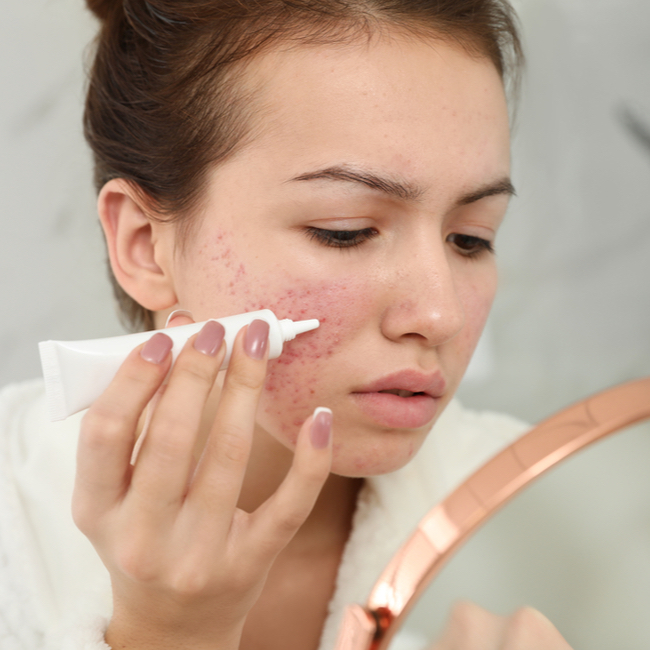
What are the primary causes of rosacea?
Unfortunately the major causes of rosacea are still largely unknown, but King does note that genetics likely play a large role in the appearance of this rash-like irritation on your skin. “Common triggers include emotional stimuli, hormonal changes, sun exposure, temperature changes, hot beverages, spicy foods, alcohol and chocolate,” she adds.
While it’s unclear why these triggers may be so, it has been noted that these specific factors can worsen the appearance of inflamed blood vessels under the skin, exacerbating the appearance of rosacea. If you’re unsure if what you’re experiencing is rosacea, King explains that sensitive skin is more likely predisposed to this condition, characterized by instances of skin flushing and intense warmth.
“There is very much a spectrum that varies in degree of severity and type of rosacea,” King adds. “We generally classify rosacea into three types: 1) erythematotelangiectatic rosacea, which is characterized by flushing, redness and visible blood vessels; 2) papulopustular rosacea, which is characterized by red bumps and/or pus bumps that come and go; and 3) phymatous rosacea, which is characterized by marked skin thickenings and irregular surface nodularities of the nose, chin, or forehead.” However, regardless of which type of rosacea you’re struggling with, there are tricks you can integrate into your beauty routine that may make your skin less inflamed.
Use Gentle Ingredients & Learn Your Triggers
It may seem like common sense, but making sure to use gentle products on your skin can make all the difference in reducing potential triggers. There are often products particularly marketed towards rosacea-prone skin, and looking for ingredients that will bolster the outer barrier of your skin will be most effective for minimizing inflammation and redness. “This includes gentle cleansers that are free of detergents, like Dove beauty bar, and good moisturizers that contain ceramides or other emollients,” explains King. “Gentle facial oils with anti-inflammatory properties like The Jojoba Company's Calming Jojoba with Bisabolol may be helpful for some people with rosacea.”
However, it’s always important to be intentional with new products you’re adding into your skincare routine, and doing patch tests on your arm before applying new ingredients directly to your face can save you much irritation and discomfort. “Try to figure out what triggers your rosacea and avoid these triggers,” adds King. This can be certain foods, skincare ingredients, alcoholic drinks, or even stressful situations.
Topical Medications
Aside from your regular skincare routine, using topical medications designed to treat rosacea will also be beneficial in reducing redness. “Metronidazole cream or gel is a mainstay of treatment that has anti-inflammatory properties and antimicrobial properties. Azelaic acid is also helpful, as is sodium sulfacetamide for its anti-inflammatory properties,” says King.
Checking in with your dermatologist will ultimately be essential before adding any new medications, but there are options for minimizing the angry red rash that rosacea can bring about. “There are also topical products like Mirvaso and Rhofade that help decrease redness by constricting superficial blood vessels in the skin,” adds King.
Although you won’t see results overnight (big surprise), regular use of gentle ingredients mixed with topical medication can make all the difference in fading the intensity of the inflammation caused by rosacea. Trial and error may be necessary before you find a solution that works for you—no skin is the same, after all, but removing harsh ingredients is the first step you can take towards managing your rosacea and taking back control of your complexion.


